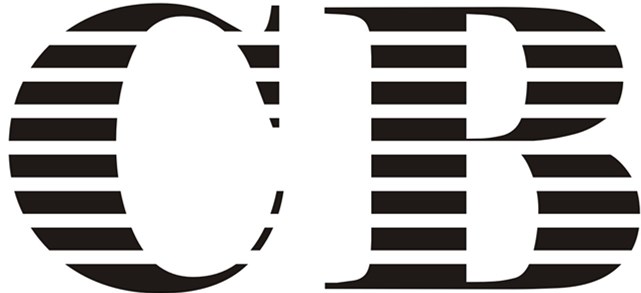The use of bonding technology for book binding is an old and practical technology. With the development of science and technology, natural products (bone glue, starch, etc.) have been used as adhesives and have entered a new period of development in which multi-component synthetic adhesives are composed of polymer blends and polymers. The use of wireless glue-binding to replace flat-booking has fundamentally changed the backwardness of the post-printing process and ensured the rapid development of the printing industry as a whole.
In the early stages of the renewal of the old and new technologies of wireless binding and peacemaking, some problems will inevitably arise. Mainly manifested as the use of glue bookbinding technology after the book, there are batches of pages, scattered racks, not easy to start reading, turning after the book spine deformation and other issues. Even the senior leaders were alerted to let the printing industry's veterans issue "adhesive clearance has no clearance" advice. Industry authorities also proposed the overall layout of the year 2000 as the binding quality.
Why do these problems occur? Even the world-class Martini linkage production line is not spared?
The key lies in the unique characteristics and advantages of the adhesive (book block and cover), adhesive (glue glue), and adhesive (binder), which cannot be combined in the glue production process. New dynamic changes in production conditions restrict damage.
First, the adhesive body (book block and cover)
The rapid development of the market economy has led to the prosperity of the press and publishing industry, which has continuously created a record high in the quality and quantity of China's paper industry and its products. To improve paper quality in China, special sizing agents, dispersants, flocculants, defoamers, lubricants, adhesives, water repellents, anti-adhesives, wetting agents, release agents, softeners, anti-mould agents, retention The application of additives and fine chemicals such as filter aids has opened up a broad prospect for improving the production process and product characteristics of pulp, paper and board. Mastering the characteristics and technical requirements of larger amounts of caustic soda, bleach, fillers, and coatings, and accurately controlling the amount used is an important part of a stable pulp and papermaking process.
The book blocks and cover sheets used as adhesive bookbinding adhesives are developed toward coated papers (offset paper and coated paper), and they are still heavily used for cover materials in the selection of printing materials for primary and secondary school students and general books. Coated paper (off-set paper, coated paper), and paper for text (relief paper, offset paper).
The main source of material for the base paper is wood pulp fibers. The wood pulp used in the base paper includes chemical softwood pulp, chemical hardwood pulp, and mechanical wood pulp. In general, the number of fiber units per unit volume of "hardwood" is 10 times greater than that of "cork"; the fiber size of northern wood is smaller than that of southern wood; softwood fibers are longer and have better strength. However, there are wood species such as southern yellow pine of softwood fiber, western hemlock and red rubber tree of hardwood fiber, birch, white cypress, oak, beech and so on. The difference in fiber size, "fines" produced after being beaten or refined, will fill the voids in the fiber layer and determine the difference in smoothness, evenness, and opacity of the base paper.
In the chemical method, lignin and resin, etc. together with the fibers are dissolved during cooking and separated from the fibers by washing and finally bleached to obtain a bleached pulp. Alkaline systems have the feasibility of using fillers instead of fibers. The filler quantifies the paper while also reducing paper strength.
The fibers constituting the base paper have a diameter of 20 μm to 65 μm even after the papermaking process of refining (or beating), pressing, and drying. The paper is subjected to water swelling and cellulose debonding alternately during the papermaking process. Each cycle of "a wet" and "dry" increases the roughness of the original paper surface.
In the refining process of raw paper into pulp, when the fibers are cut excessively, the result is a shorter fiber length.
The proportion of forest area in China is very small. Pulp for papermaking basically depends on imports. In order to protect forest resources and reduce papermaking costs, within 20 years before fast-growing forests have been grouped out and in order to protect the ecological environment, non-wood pulp stocks, base papers, and raw paperboards have been adopted and will continue to be used. The necessary ratio and technology are implemented in the paper industry in our country.
This means that in both perfect binding and binding papers, there are also defects such as rough surface, low strength, and easy to pull off the powder compared to foreign advanced countries. Under the new conditions of popularizing electronic color separation, laser photocopying and multi-color high-speed equipment for printing applications before printing, the printing cycle is greatly shortened, and the requirements for binding are both good and fast. The dynamic new reaction on the adhesive body is:
1. Rough surface, low strength, easy to pull off the inner core of the paper, after the bookbinding machine milling back groove cutter cutting surface, not a smooth and flat interface, but the spine coating surface and the edge of the milling slot plush Velvet convex protrusions. This not only reduces the mechanical processing geometry of the bond, but also changes the state of the bonding interface, and at the same time blocks the wetting and filling of the bonding surface by the hot melt fluid within a specified time.
2. Quick-free printing requires no time gaps for binding processing. The water absorbed by the paper, especially the ridges of the bookbinding book, is too late to be distributed to the outside world. This makes the content album enter the glue-binding production line in the state of high moisture content. . There will be three new phenomena occurring:
1 After the glue was booked, the moisture in the inner album gradually evaporated, causing the paper to shrink, with the same proportion of retraction. The separation of glue and hot glue was loose and the "slotted small glue" was separated;
2 When the contact album was in contact with the adhesive hot melt adhesive, the hot melt (170oC) hot melt caused the moisture contained in the surface of the album to volatilize. At the same time, the coated hot melt adhesive is unable to press the water vapour that escapes to the surrounding atmosphere to the book bonding interface. The volatilized and contained water vapor molecules are not only a newly formed dispersion layer between the colloid and the adhesive body, but also cause gelation on the surface of the melted hot melt adhesive, and the overall fluidity is changed and destroyed. Slot infiltration and filling. In particular, it is more serious when the milling flute is blocked by the fluff fibers produced by the cutting.
(to be continued)







